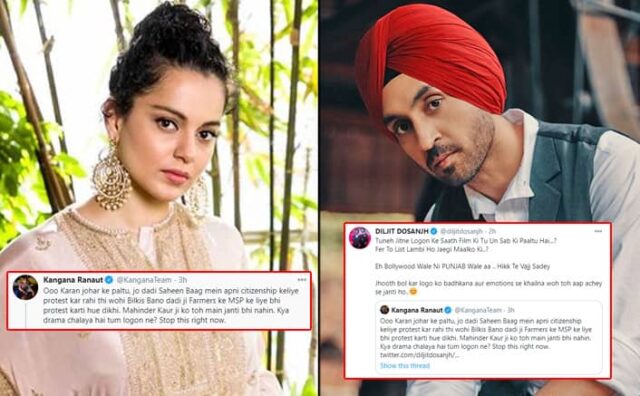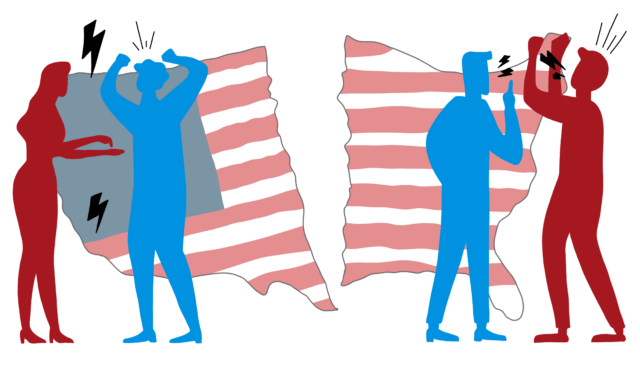Since the onset of the pandemic, the world has heavily resorted to social media and daily online alternatives as their source of information and communication. Along with this high reliance on the online nexus, social scientists have noted that the society has also become highly polarised.
What is polarisation?
Social Polarisation refers to “segregation within a society due to various socio-economic aspects” which may range from income inequality to varying political opinions. Polarisation often highlights the extremities of the social structure.
Social media plays a major role in polarisation as the platform essentially offers the user a safe space to relay their opinions regarding social and political activities that take place in the society. Social media thus also becomes effective at providing a varying degree of opinions, which often lead to clashes between non-like-minded people.
Polarization In Social Media
Social media has been among the primary agents of polarisation, especially in terms of political discussions on the platform. While the platform does provide a potential space for political communication while urging the users to be more tolerant and open-minded, often the reality portrays that it furthers polarisation and becomes a reinforcer of stereotypes.
Jaime Settle, Professor of Government at William and Mary, is an expert in interpersonal interactions and has done significant research on social media polarisation through her book “Frenemies: How Social Media Polarises America”. She explains that:
“Primarily, what’s going on in the social media space, particularly on a site like Facebook, these companies are trying to encourage people to reveal information about their lives.
So, what you’re really seeing is a lot of inadvertent and intentional signal sending about our political identities. On the one hand, you have people who are outspoken (friends and family) members, who are very comfortable and enjoy having a platform to share their political views.
They’re not going for nuanced policy evaluation. They are trying to identify themselves and find other supporters to cheer for their team.
That really is kind of a turnoff for a lot of people who don’t want politics interfering in their social spaces, so those people may have opinions, but they’re not sharing or engaging with others.”
As Professor Settle explains, the varying degree of opinions, especially in a political context leads to an increase in polarisation and intolerance of opinions.
She further explains that it is essentially due to the non-verbal communication taking place online that people are not essentially sensitive while communicating and thus are also not good at recognising the essence of a message.
The entire process of communication becomes much harder to interpret in an online mode. The exposure to opposing views on social media platforms can undoubtedly serve as an agent of polarisation then.
How Do “Influencers” Affect Polarisation?
In an effort to answer the question that what about social media makes people so polarised, Damon Centola tried several social media experiments to understand the extent of polarisation.
After dividing participants into “echo chambers” of politically radical opinions, the social scientist noticed that the effect was not always negative. The experiment showed that interactions between people of different opinions also contributed to “less polarisation” and the adoption of a moderate opinion.
Social media alone is not an agent of polarisation, but when amplified with “influencers” the effect can be quite different. An influencer is essentially a person (typically construed to be a wealthy individual with an admirable lifestyle) or a page with a very specific network.
The influencer is thus a very centralised concept, with a numerically small entity in the centre connected to a network of connections with people in the ‘periphery’. This structure provides a very powerful position to the influencer.
Also Read: Breakfast Babble: Why Does Everyone Want To Act Politically Correct On Social Media?
The opinions of the influencer are then manifested by their followers, thus gaining a wider reach than the majority of regular social media users.
With increasing transparency and ease of communication in social media, influencers receive ‘celebrity status’ and are then looked up to by their followers, who try to imitate the lifestyle (and opinions) of their idols.
Recently, these celebrities have also used their social media space to express their opinions, thus leading to a myriad of responses and expressions from their followers.
During the 2021 American Presidential elections, it was noted that many celebrities openly expressed their political opinions and preferences, which also played a major role in the formation of the followers’ opinions.
Indian celebrities were seen to be at odds due to their polarising political opinions regarding the political unrest following the farmer protests, which led to the formation of stark groups with extremist opinions.

While social media has allowed us to connect more and communicate efficiently, it has also worked in providing us with a platform that very easily ignites socio-political unrest.
Is Polarisation Always Bad?
Social polarisation undoubtedly contributes towards social unrest, be it in a physical space or online. But is it always bad and to be taken in a negative light? The problem that needs to be addressed is the rising intolerance among social media users. While intolerance is inherently negative, polarisation may not be considered to be all bad.
Polarisation helps us understand and evaluate issues through different angles and points of view, which is essentially important to function efficiently. Polarisation challenges the notion of a “perfect solution” and encourages us to develop diplomatic solutions.
But with time, social media has become an agent that enhances polarisation as the user feels they have the complete right to impart their views irrespective of it being a public space. Social media thus becomes “unfiltered” to a large extent, which promotes intolerance.
For example, almost anything and everything will have opposing “trending” views on the social media platform, Twitter, due to its extensive user base, which rather than promoting a healthy communication pattern, essentially attacks opposing views because of the absence of a filter. This increasing extremist polarisation has also given rise to cyber-crimes and harassment due to opinion differences.
While the concept of polarisation is not essentially bad, the exploitation of communicative space due to extremism is inherently problematic.
While social scientists have identified the root cause of this polarization, it becomes difficult to navigate solutions for the same without enforcing censorship and authoritative solutions.
How do you think social media can be made a more passive and safe space for communication? Let us know by commenting below.
Image Credits: Google Images, Twitter
Sources: Scientific American, Vox, The Wall Street Journal
Find the Blogger: @AishuPoshu
This post is tagged under: social media; #social media influencers; addiction to social media; evils of social media; hate on social media; polarization; social media polarization; polarization is not always bad; conflicting political opinion; social media politics; clash in opinions; difference in opinions; gen z opinions; Social opinions; platform to express opinions; what is social media polarization; twitter; twitter feuds; social media and communication; online communication
Other Recommendations:
Fake Friendly Fridays: We Interview A Social Media Influencer


































